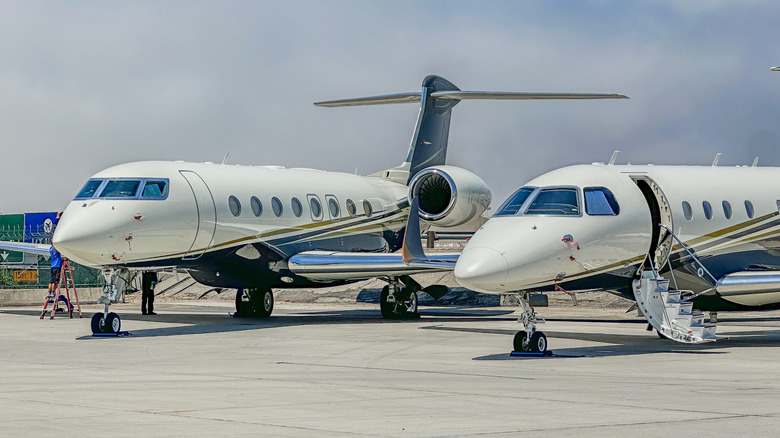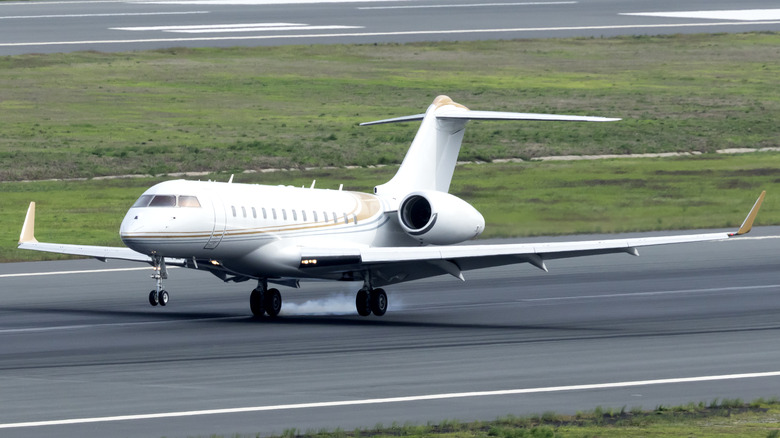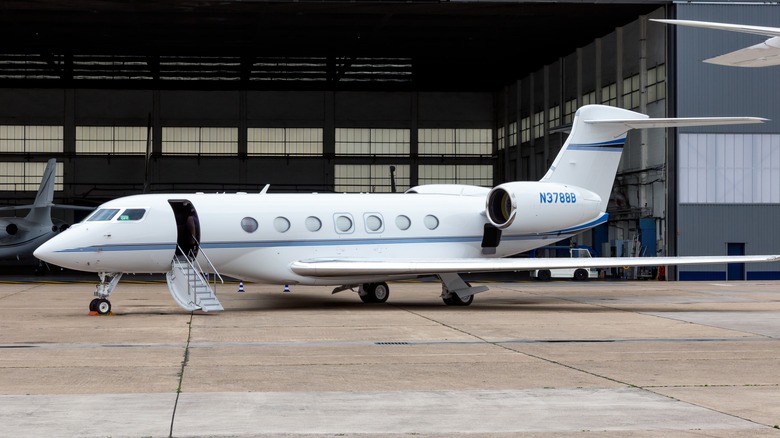Can Private Jets Really Land Anywhere?
Private jets may be owned or chartered by people or companies, but either way they offer freedom with regard to departure time, destination, and the number of passengers they carry. A common misconception about private jets, though, is that they can land anywhere. Actually, there are many limitations on where a private jet can land, including whether the airport has the facilities to service the aircraft; noise and operating-hour restrictions, especially near residential areas; and approval from regulatory bodies, including civil aviation authorities.
Even if private jets cannot land just anywhere, however, they can still land in more places than commercial airplanes — in fact, private jets can be used for international travel. According to the jet charter company Blackjet, private jets have access to over 5,000 public and 14,000 private airports. Compare that with just 4,072 airports with scheduled commercial flights, according to the nonprofit Air Transport Action Group.
One reason private jets can land in more airports is their smaller sizes compared to the aircraft flown by commercial air operators. Many airports around the world cannot accommodate wide-body aircraft because they lack the runway space large aircraft need to take off and land. Additionally, an airport's gates and taxiways may have limited room, and larger aircraft require broader gate areas and taxiways to maneuver. Lastly, the available ground handling equipment, including gate structures, boarding bridges, and baggage handling equipment, may not be able to meet the load and volume of bigger aircraft.
Convenience and flexibility for a premium
Private jets can land at major commercial airports, smaller regional airports, and even smaller private jet airports. But while private jets can fly to a major international airport, they seldom do, because most private jets use airports dedicated to business aviation.
Unlike large commercial airports, business airports are designed to meet the requirements of private jet travel, providing specialized service to its passengers. Large international airports, meanwhile, don't offer quick access to their facilities because of their high volume of traffic and passengers. Also, the complicated, tedious administrative procedures required by their customs departments can take a long time to conduct and complete. Finally, commercial airline flights are given priority for takeoff at large airports, so a private jet would need to wait before it can leave — the opposite of what private jet passengers expect for their premium airfare.
Traveling via private jet is expensive. On a commercial flight from New York to Washington, a round-trip ticket might be as low as $129, while a chartered flight can cost between $8,500 for a small light jet up to $14,000 for a heavy jet. For people who can afford it, the faster, more comfortable, and less stressful travel experience can be worth the price. This is particularly true for those who prioritize productivity and have demanding schedules, where the convenience of being able to land almost anywhere, any time may be more important than the cost.
Exclusivity and efficiency
While most commercial airlines operate a hub-and-spoke system where major airports serve as hubs where flights from smaller airports converge, private jets can theoretically fly anywhere they can take off and land safely. The most important considerations for where a private jet can go are its size, the size of the airstrip, the weight it will carry, and the amount of fuel needed. In addition to this, the largest private jets in the world have long-haul capability that can fly passengers across the globe without the need to refuel, or requiring only one stop.
Private jets provide more options for travelers and offer several other benefits, including travel flexibility, privacy, and convenience. However, the time savings and efficiency from departure to arrival when contrasted to commercial flights are some of private aviation's biggest advantages. Private planes provide the freedom to go on the individual's time, versus commercial flights, which follow strict schedules and require passengers to follow the airline schedule.


